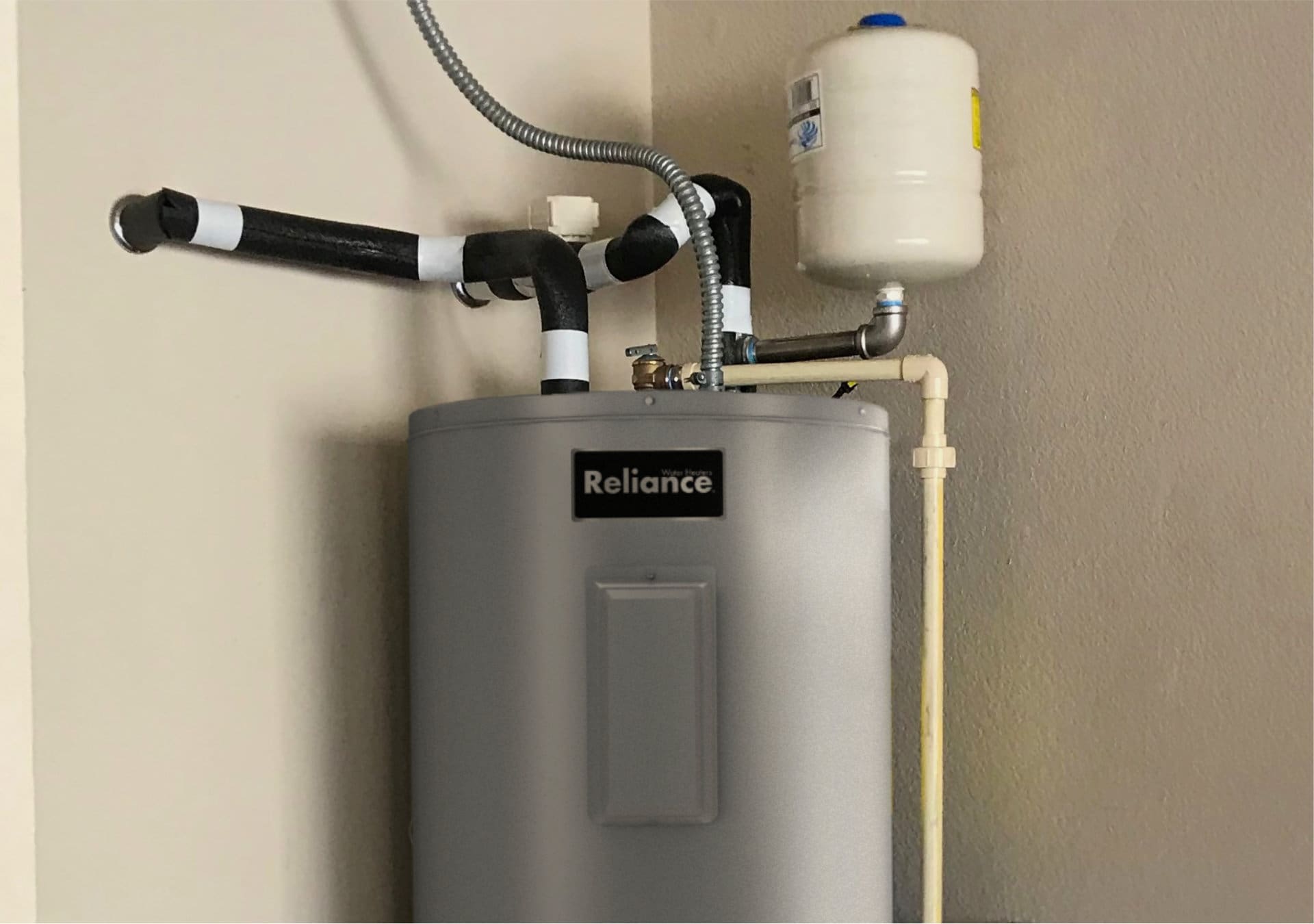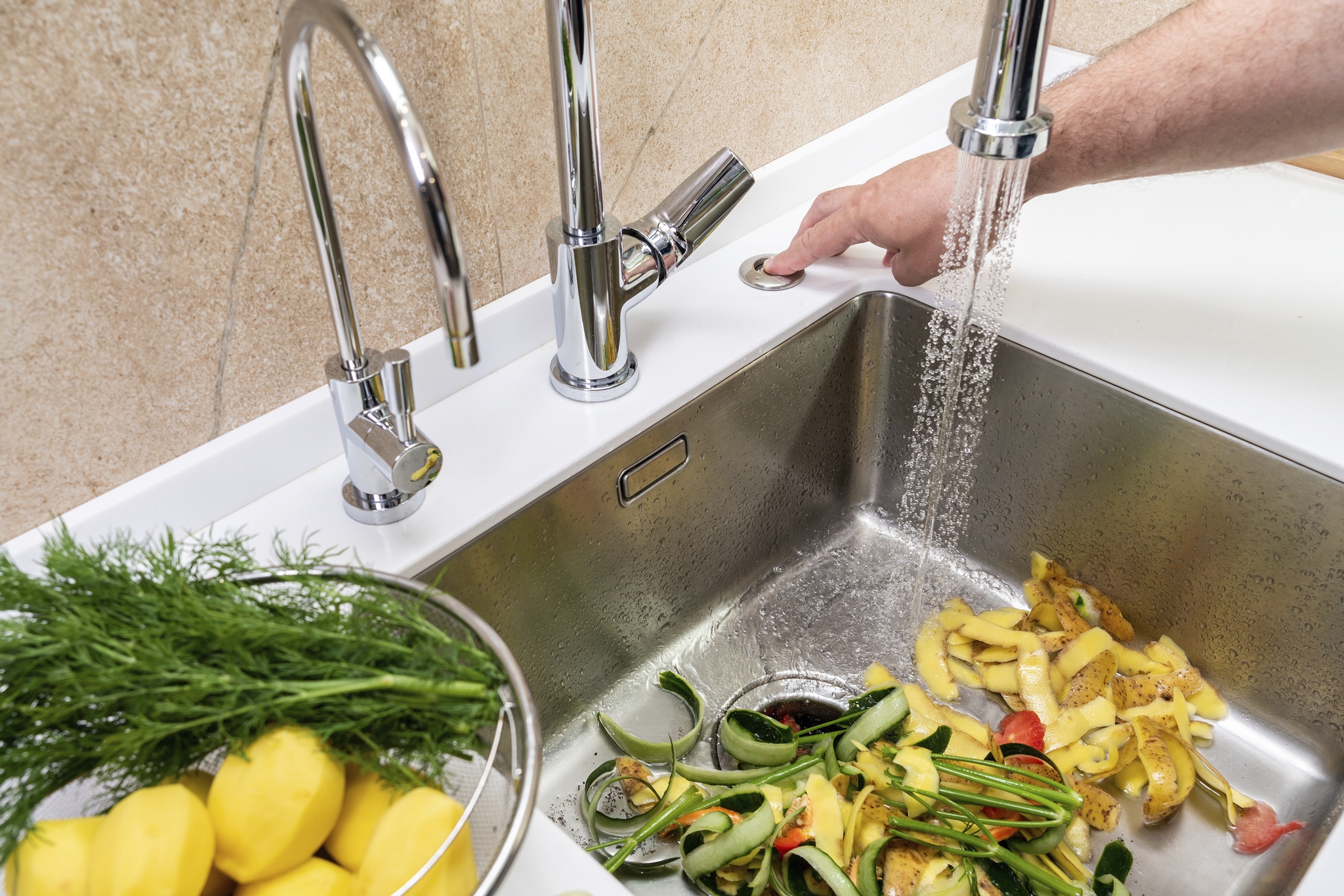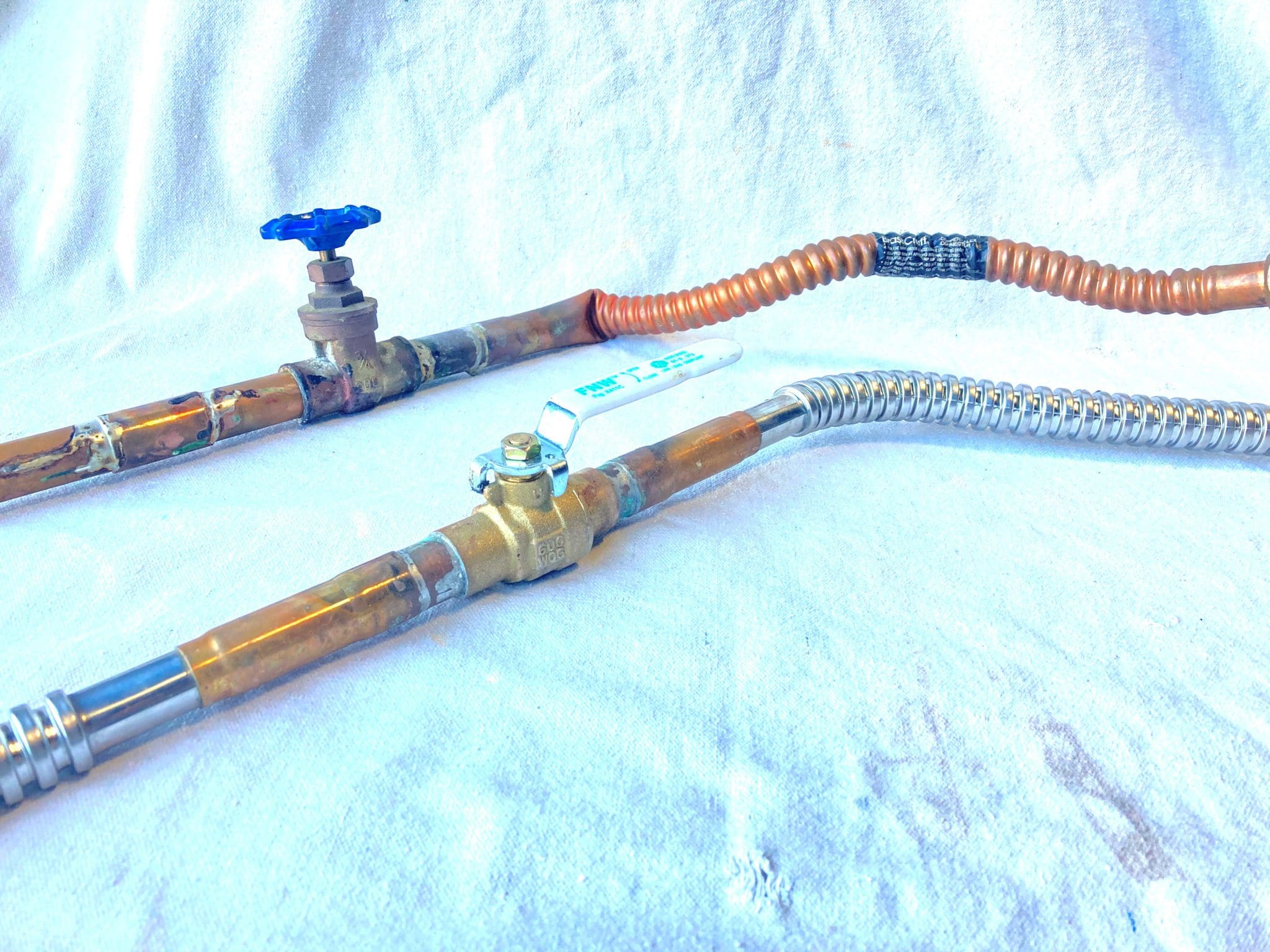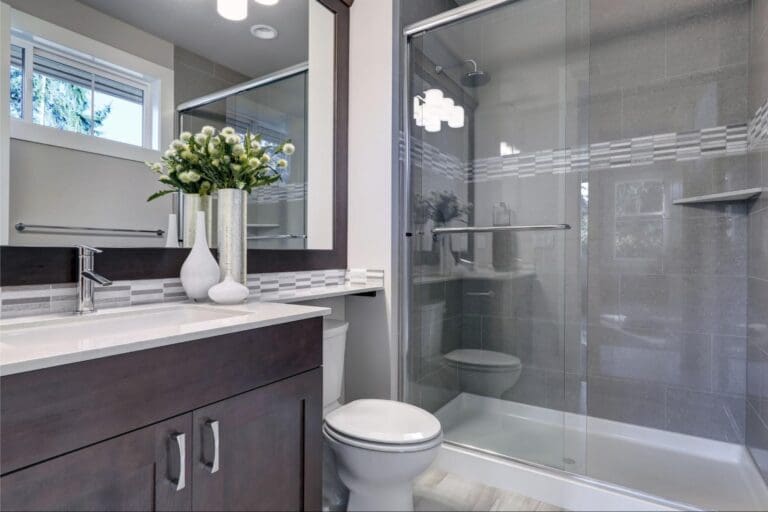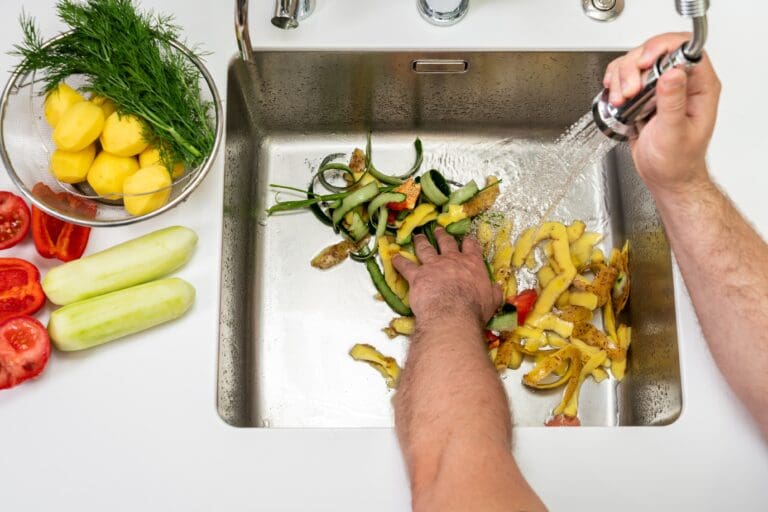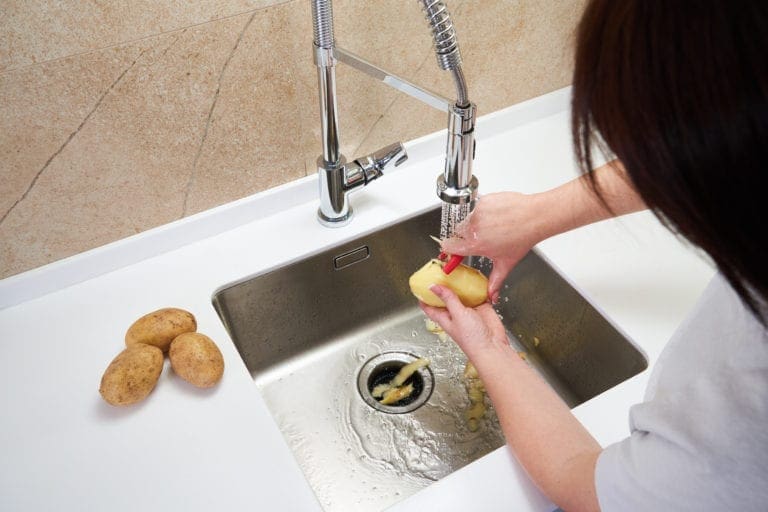The kitchen faucet is the most frequently used plumbing fixture in the house. It is turned on and off many times through the course of an average day. It is also used by many different people. It is one of the most visible faucets in the home, being on display for anyone entering the kitchen area. It is also expected to perform very well from a functional standpoint. The many different tasks associated with preparing food and cleaning can be made easier with a quality kitchen faucet.
We get a lot of different questions from our clients in North Dallas about repairing or replacing the kitchen faucet. When should you buy a new faucet instead of repairing the one you have? What’s the best kitchen faucet brand? How can I make sure the faucet will fit my sink? What options are available for kitchen faucets? This article will answer those questions and help you make a good decision about your next faucet purchase.
Repairing vs Replacing
Before going out and buying a new faucet, you may wonder if it is worth it to repair your existing kitchen faucet. This is a good question. Sometimes repairing the faucet is the best option. Here are some factors you should apply to the decision-making process:
1. How long has this faucet been malfunctioning?
Here are some common issues: leaking around the handle, dripping constantly from the spout, leaking water around the base of the spout when turned on, an exceptionally stiff or stuck spout. If the faucet has been showing one or more of these symptoms for quite some time, then there is a higher likelihood that any attempted repair will be unsuccessful because too much has been damaged. If water is leaking into parts of the faucet that it was not designed to, then it can very quickly destroy the valve body of the faucet or the various O-rings and seals inside the faucet.
2. Is the faucet made by a reputable manufacturer?
The next thing you want to consider is the brand of the faucet in question. This makes a huge difference in the likelihood that a repair will be successful! We’ll talk more about brands in a minute, but if the faucet is made by a reputable, well-known manufacturer, then you have a better shot at repairing it. This is because the parts are much more widely available and because the faucets are generally designed better (which is a result of the competitive warranties and reputations of the faucet makers). It can be very difficult to find parts such as O-rings and cartridges for cheap faucets and very frustrating to install them in a poorly designed faucet.
3. Is the faucet finish in good shape?
Finally, you want to consider the way the faucet looks. If the finish is badly worn out or if the style is outdated, it may not be a good investment to spend time and money attempting to repair the faucet. A good-quality, beautiful faucet is a joy to use every day.
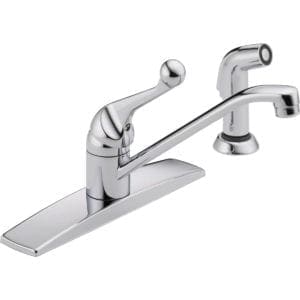
Faucet Brands
Not all faucet brands are created equally. Some lesser-known inexpensive brands (and even some extremely high-end brands) don’t make or even design the faucets that bear their label. It seems as though they might be marketing companies disguised as faucet-makers. Most of the time, it isn’t a good idea to buy a faucet from a company like this. They don’t have as much at stake when it comes to long-term reputation. They also can easily switch vendors and leave you frustrated at the lack of support when it comes time to repair the faucet a few years down the road.
Think about serviceability and support! No matter which brand you go with, keep in mind that the faucet won’t last forever. Eventually, it will need service and repair. Even good quality brands and designs have a percentage of faucets that break prematurely. Many people purchase a cheaper faucet with a disposable mindset. Although this approach works for some, it very often results in frustration when the faucet breaks sooner than expected, and the correct parts cannot be easily located.
As a general rule, it is a good idea to stick with one of the mainstream faucet manufacturers. We have had generally good experiences with Kohler, Delta (Brizo and Peerless), and Moen kitchen faucets. These manufacturers have been in business for a long time and stand behind their products. Because they are so common, the parts are usually easy to locate as well.
When it comes to price, a good rule-of-thumb is to pick a faucet that is on the higher-end of your budget. Because it will be heavily-used and highly-visible, spending more on the kitchen faucet has a very good return on investment compared to other types of faucets. Although it is common to encounter homeowners who regret purchasing cheap faucets, you won’t likely meet one with a nicer faucet who has buyer’s remorse.
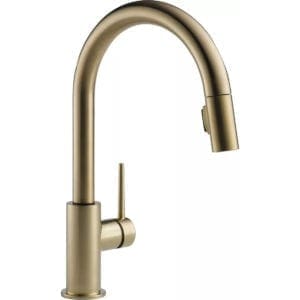
Popular Kitchen Faucet Styles
There are many different styles of kitchen faucets on the market today to choose from. One style that is very popular right now is the high-arc pull-down kitchen faucet which takes some design cues from commercial settings. They are called high-arc because the spout goes straight up vertically and then turns down over the kitchen sink. This allows for more workspace underneath the spout.
Traditional kitchen faucets would have a low arc spout. The faucet spout would come up diagonally from the center of the faucet. These are mostly being replaced by high arc faucets nowadays. Some high-arc faucets will even take the commercial look a step further. These residential pre-rinse style faucets will generally be larger, bulkier, and have the high arch made out of a spring.
While you can still find two-handle faucets, the vast majority of faucet designs have shifted to single-handle. This handle is usually located on top of the faucet for the traditional spout style. It is located on the right side of the faucet for the high-arc style.
Bottom line: there are many different looks ranging from classical/traditional to contemporary/modern and farmhouse. It’s worth it to take your time and shop for one that you will enjoy using on a daily basis.
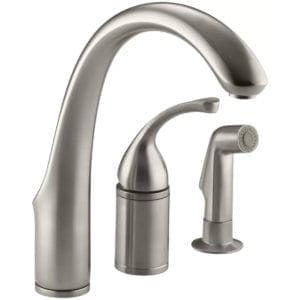
Kitchen Faucet Mounting Configurations
Unless you are replacing the countertop/sink basin at the same time, you’ve got to make sure that the faucet you buy works with the holes which are already drilled into the countertop/sink basin. There are faucets designed for 1, 2, 3, or 4-hole installation. Some will work with only one configuration. Some are adaptable to any layout.
Single-hole faucets are designed so that the spout and the handle are all one piece. All water lines are designed to go to a single hole. Many of these faucets will also come with the ability to accommodate more holes with a decorative cover plate that can be installed under the faucet and even a soap dispenser which you can use to fill up an existing hole.
Two-hole faucets are usually designed with a separate spout that installs in one hole and the valve body/handle installs in the other hole.
Three-hole faucets are very common in older homes. This layout has three evenly-spaced holes with a total distance of 8″ between the center of the hole on the left and the center of the hole on the right. A single, wide faucet body usually covers all three of these holes. This layout is very common for two-handle kitchen faucets.
Four-hole faucets are typically very similar to three-hole faucets, but they have a separate pull-out vegetable sprayer which is installed in the fourth hole.
Check to see what your existing faucet hole set-up is. Compare that to the box or specification sheet of the new faucet when you are buying it to see if it will work.
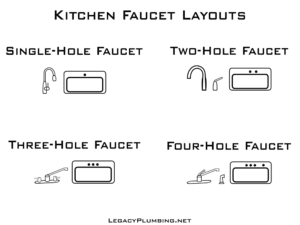
What About Hands-Free or Touch-Activated Faucets?
Different technologies have developed recently for the residential market to allow the kitchen faucet to be turned on with a simple tap or even just a wave. These are often called “touchless”, “hands-free”, or “touch-activated”. Moen’s version of this is called the Motionsense. Delta’s version is called Delta Touch2O. Kohler calls theirs “Response Technology”.
The touchless style faucets use a sensor on the top and/or front of the faucet which allows it to be turned on and off with a simple pass of the hand or if it senses a cup or pot underneath.
The touch-activated faucets will automatically turn on if the faucet body is tapped with the back of your hand or your wrist.
These technologies are very convenient and allow the water to be turned on and off without getting the faucet dirty or even when your hands are full. The technology is even getting further developed to allow you to give your faucet verbal commands!
Although these faucets continue to improve, be aware that these faucets have more points of failure than manual faucets and often require more maintenance (like changing batteries). Repairs will generally cost more over the course of its life as well. If you decide to go with something like this, it is all the more important to go with a mainstream faucet company that has a good warranty. Read plenty of reviews before buying as well!
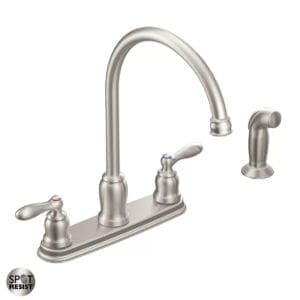
Faucet Finishes
Many different faucet finishes have come and gone, and some continue to have enduring popularity. Keep in mind that different manufacturers have slightly different names for their finishes. But, as a general rule: chrome is a mirror-finish metal look; stainless is a matte-finish cold metal look; nickel is a warm metal look; bronze is a dark brown/brass metal color; champagne is a lighter yellow-metal color. Simple white faucets can still be bought (although this isn’t currently in style). Black faucets are gaining more popularity, though.
Any of the metal finishes can be “brushed”, which puts a light matte/line texture on the finish. Traditionally, chrome is the most popular finish for the kitchen faucets. Brushed stainless and brushed nickel are the second most popular kitchen faucet finishes. These often match the appliances in the kitchen and tend to hide fingerprints and water spots a little better. Oil rubbed bronze is also a somewhat popular choice in this area. There are many different shades of that finish.
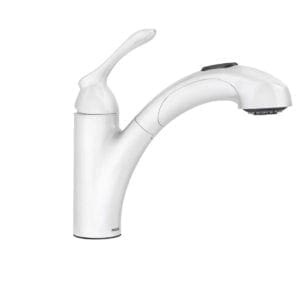
Legacy Plumbing Faucet Installation
If you do choose to replace or repair your kitchen faucet, Legacy Plumbing can help in Frisco, Plano, McKinney and North Dallas cities. Many times, replacing a faucet is pretty straight-forward. However, there are often difficulties that arise like malfunctioning fixture shut-off valves or rusted-on mounting hardware. Access can be difficult too depending on the space under the cabinet. There is nothing more frustrating than having a kitchen faucet that keeps coming loose because it was mounted incorrectly or not installed according to the manufacturer’s specifications. We carry everything we need to make sure the job is done right the first time. We also have the special tools needed to deal with stuck hardware or difficult access.
Hopefully, this article helped answer some of your questions about whether to replace or repair your faucet and which faucet to buy. Feel free to reach out if you have more questions.
(Faucet images in this article are from build.com. Legacy Plumbing is not affiliated with this website in any way.)




